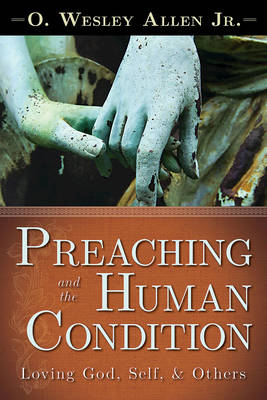
- Afhalen na 1 uur in een winkel met voorraad
- Gratis thuislevering in België vanaf € 30
- Ruim aanbod met 7 miljoen producten
- Afhalen na 1 uur in een winkel met voorraad
- Gratis thuislevering in België vanaf € 30
- Ruim aanbod met 7 miljoen producten
Zoeken
€ 26,95
+ 53 punten
Omschrijving
In the wake of Enlightenment emphasis on the individual and confidence in human progress/ability, sermons often suffer from a lack of adequate analysis and presentation of the human condition. The result is that preachers either 1. (intentionally or unintentionally) offer self-help type messages or 2. fail to help hearers experience the breadth of the good news of Jesus Christ because the "bad news" of the world is not presented with weight. In this work, the author proposes to use the pericope in which Jesus is asked about the greatest commandment (Mk 12:28-31) as a lens for preachers exploring the human condition cumulatively from three different perspectives across the course of their preaching week in and week out. "Love God" suggests a perspective in which the human condition is seen in relation to a broken relationship between humanity and God (vertical). "Love neighbor" suggests a perspective in which the broken relationship is between humans and others (horizontal). And "as yourself" suggests a brokenness in relationship to one's self (inner). While different theological schools have emphasized these perspectives differently as the starting points for their anthropology, views of sin, etc., all schools include all three perspectives. In individual chapters, the author will unpack these three perspectives theologically, move to suggest practical homiletical approaches to preaching in relation to each perspective, and provide a sample sermon dealing with that perspective.
Specificaties
Betrokkenen
- Auteur(s):
- Uitgeverij:
Inhoud
- Aantal bladzijden:
- 128
- Taal:
- Engels
Eigenschappen
- Productcode (EAN):
- 9781501818905
- Verschijningsdatum:
- 18/10/2016
- Uitvoering:
- Paperback
- Formaat:
- Trade paperback (VS)
- Afmetingen:
- 152 mm x 226 mm
- Gewicht:
- 249 g

Alleen bij Standaard Boekhandel
+ 53 punten op je klantenkaart van Standaard Boekhandel
Beoordelingen
We publiceren alleen reviews die voldoen aan de voorwaarden voor reviews. Bekijk onze voorwaarden voor reviews.











